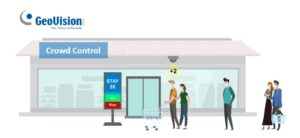
Needless to say, the covid-19 pandemic has prompted stricter control by end user organizations on who can enter buildings and how to do it in a safe manner. Against this backdrop, advanced access control solutions can be quite helpful. This article explores some of the technologies and solutions that are seeing increasing demands amid the outbreak.

Contactless technologies
While fingerprint is still the dominant biometric with which to enter buildings or other entities, it requires touching which raises health and hygiene concerns especially amid the pandemic. As a result, more and more users are turning to contactless or touchless biometrics, some of which include iris recognition, which works by way of a camera that captures the image of a person’s iris; facial recognition, which employs a capturing device that transmits the facial image back to the server to be matched against a database; and vascular biometrics, where a vascular biometric scanner captures an individual’s vein pattern image and match it against the database.
It should also be noted that physical access control by way of mobile credentials is another contactless technology that can be useful. The mobile credential is stored in the user’s phone which can then be used to interact with the reader. For example, the user’s mobile device remains in their pocket as they simply wave their hand in front of the reader.

Visitor management has become more important than ever as end user organizations protect staff and employees against outside visitors who might be infected. That said, the visitor management system, which leaves detailed records of visitors who are inside or have visited the end user organization, can be quite helpful.
One way a good visitor management system can help prevent the spread of infectious diseases is asking detailed questions during the registration process. Over the course of two years, a children’s hospital in the U.S. managed to reduce facility infection rates by 25 percent by using a Visitor Management System. By using this system, several customers in large tech companies are also minimizing infection impact, with these features to enhance your visitor registration policy with additional mandatory questions to help identify any visitors who may need other screenings, and extend your visitor registration kiosk with a mandatory pop-up asking further questions during visitor check-in.
Advanced reporting functions
The reporting functions in access control systems can now be helpful in singling out people who might have come in close contact with infected individuals. For example, a new reporting function for an access control system that is designed to help organizations, find all people who went through a door in close proximity to someone thought to be contagious.
It is conceivable that they may have contaminated the door handle or other surfaces or left aerosol contaminants in their passage. This report helps identify all people who are at increased risk of being in contact with contaminants or contagious individuals.
The reporting function correlates physical proximity of an infected individual with other employees and badged visitors based on the use of the access control system. A report can quickly be generated to correlate access events by time window to identify people who are at increased risk of being in contact with contaminants or contagious individuals, allowing enterprises to proactively advise individuals of their potential contamination and take the necessary hygienic precautions.
Adapted from a&s Magazine



































































